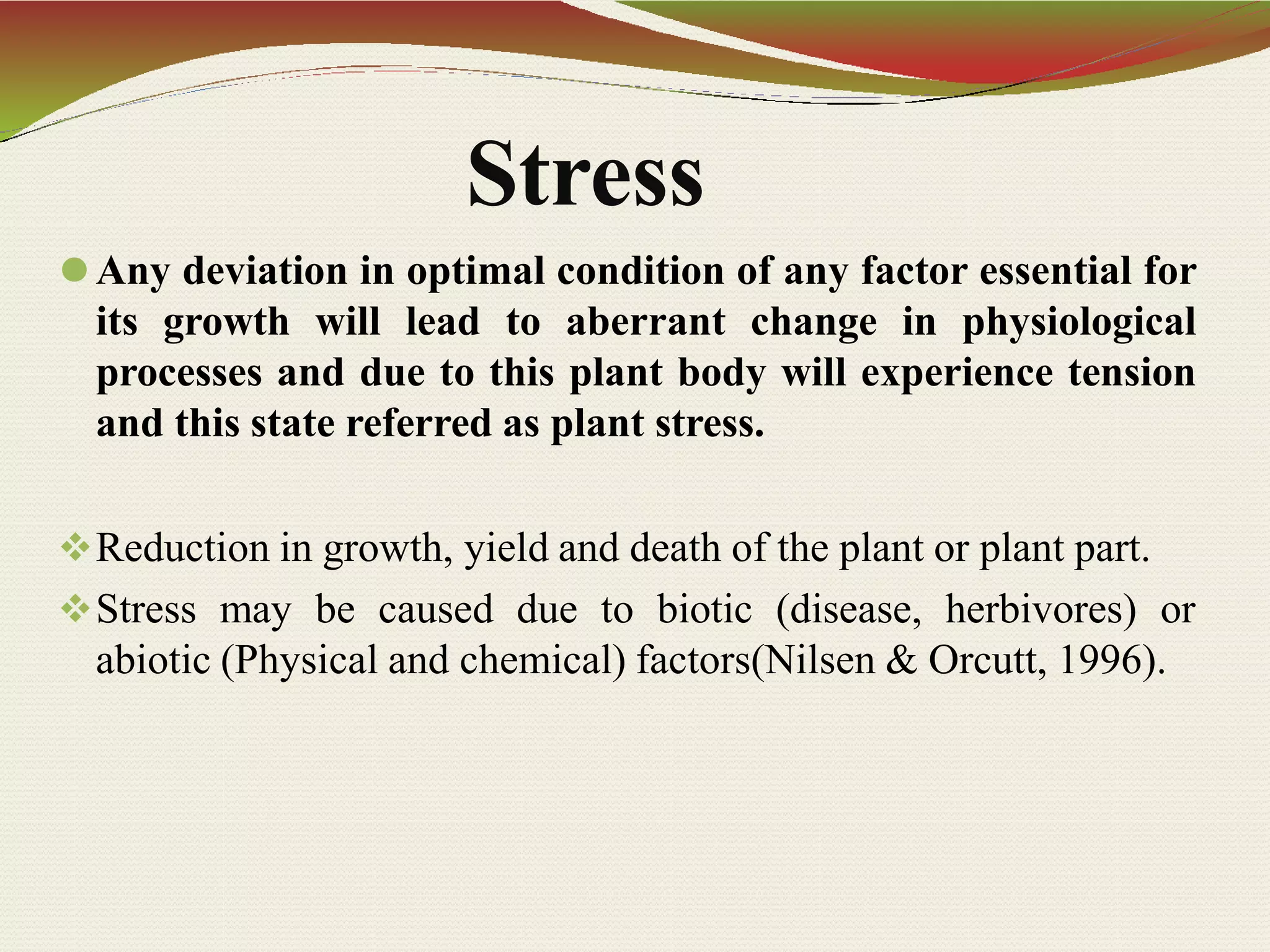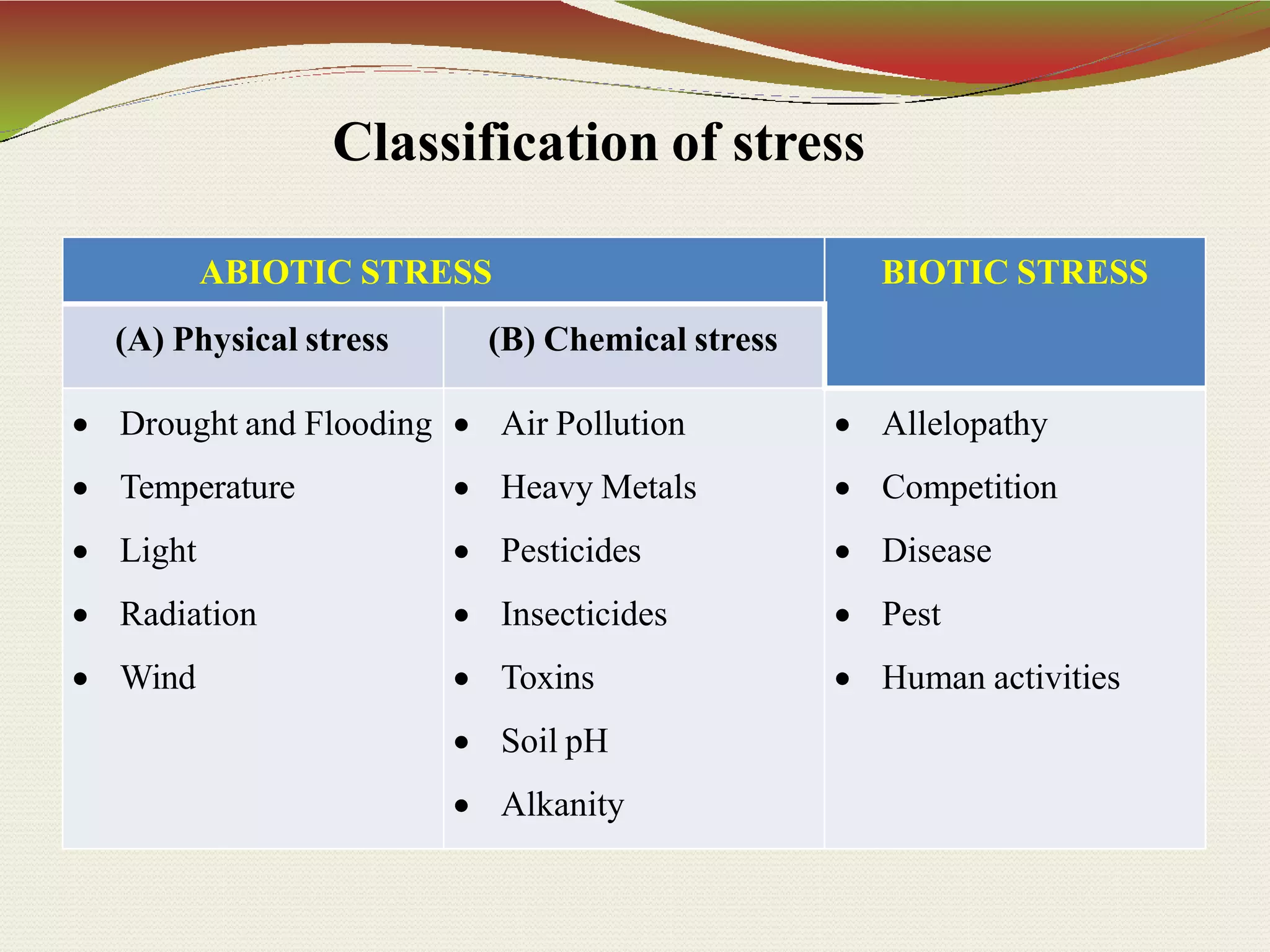This document discusses various types of stress tolerance in plants. It defines stress as any deviation from optimal growth conditions that causes physiological changes in the plant. Stress can be biotic (from organisms) or abiotic (physical and chemical factors). Some key abiotic stresses discussed are water stress, salt stress, temperature stress, light stress, nutrient stress, wind stress, and air pollution. The document also outlines various strategies plants use to tolerate stresses, including avoidance, endurance, and escape mechanisms. It provides detailed explanations of different stresses and their impacts on plant growth and physiology.

























